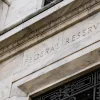Unemployment Rate Drops to Pandemic Low as Economy Adds 531,000 Jobs

The U.S. unemployment rate fell to 4.6% in October, the lowest since the beginning of the pandemic, as the economy added 531,000 jobs, the Labor Department said in a report on Friday.
Nonfarm payrolls posted the biggest gain since July and the report upwardly revised job totals for the prior two months. While the economy has added 18.2 million jobs since a trough in April 2020 when the unemployment rate spiked to a record 14.8%, payrolls remain 4.2 million jobs short of the pre-pandemic level, according to Labor Department data.
The report shows the economy is picking up steam after a late summer wallop from Covid-19’s Delta variant that filled ICUs in U.S. states with lagging vaccination rates.
“Many of the recent headwinds to hiring, such as the Delta variant, parts shortages and the availability of labor itself, are beginning to ease,” Wells Fargo economists said in a report reacting to the data. “Employers continue to raise pay at strong rate in order to attract and retain workers. The increases appear to be pulling workers back into the jobs market.”
Average hourly earnings rose 4.9% in October from a year ago, the biggest annualized gain since February. The average workweek fell to 34.7 hours from 34.8 hours in September.
The largest employment gains occurred in leisure and hospitality, with a 164,000 increase. Professional and business services added 100,000 jobs, manufacturing was up 60,000, and the transportation and warehousing sector increased 54,000.
The number of jobs in residential construction increased by almost 11,000, an acceleration from September’s pace.
It was a “welcome sign” for a sector dealing with a backlog of homes under contract with buyers waiting for delivery, said Doug Duncan, chief economist of Fannie Mae, the nation’s largest mortgage securitizer.
“We believe this may help alleviate the supply constraints present in this sector,” said Duncan, referring to the supply shortage that has plagued the housing market and contributed to record price gains this year.
While the report reflected a sunnier outlook for the U.S. economy, some economists are concerned about a possible resurgence in Covid-19 infections as portions of the country move indoors for winter and people mingle for the holidays. When Covid-19 infections rise, economic activity decreases.
The share of Americans who are fully vaccinated remains stuck near the bottom of developed economies. The U.S. rate stands at 58%, compared with 80% in Spain, 75% in Italy and Canada, 69% in the UK, and 67% in Germany, according to the Bloomberg Vaccine Tracker.
The World Health Organization has warned as many 500,000 people could die from Covid-19 before February because of a lack of access to vaccines, or because of vaccine refusal. Currently, the global pandemic death toll stands at 5.03 million people. The 751,569 deaths in the U.S. make it No. 1 among all the world’s nations, according to Johns Hopkins University.
“Another wave is sweeping Germany and China,” said Chris Low, chief economist at FHN Financial in New York. “German officials said the pandemic is ravaging the unvaccinated and filling hospital ICUs. U.S. Covid case numbers are rising again, too, though from a relatively low base.”
Kathleen Howley has more than 20 years of experience reporting on the housing and mortgage markets for Bloomberg, Forbes and HousingWire. She earned the Gerald Loeb Award for Distinguished Business and Financial Journalism in 2008 for coverage of the financial crisis, plus awards from the New York Press Club and National Association of Real Estate Editors. She holds a degree in journalism from the University of Massachusetts, Amherst.




